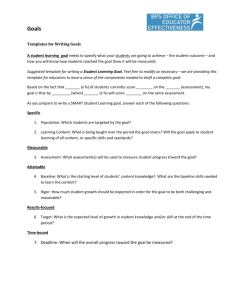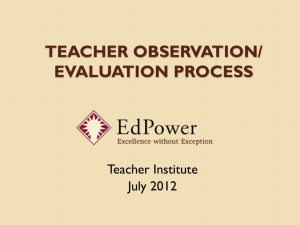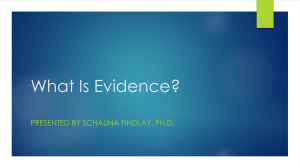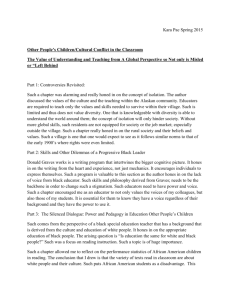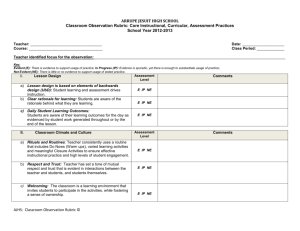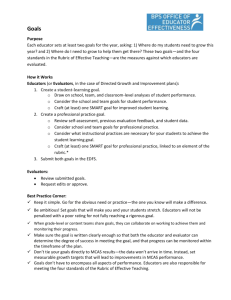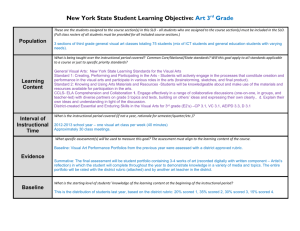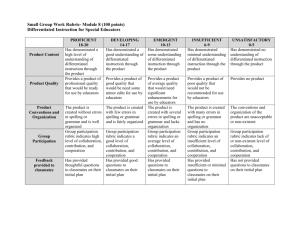Criteria for strong observation feedback & evidence
advertisement
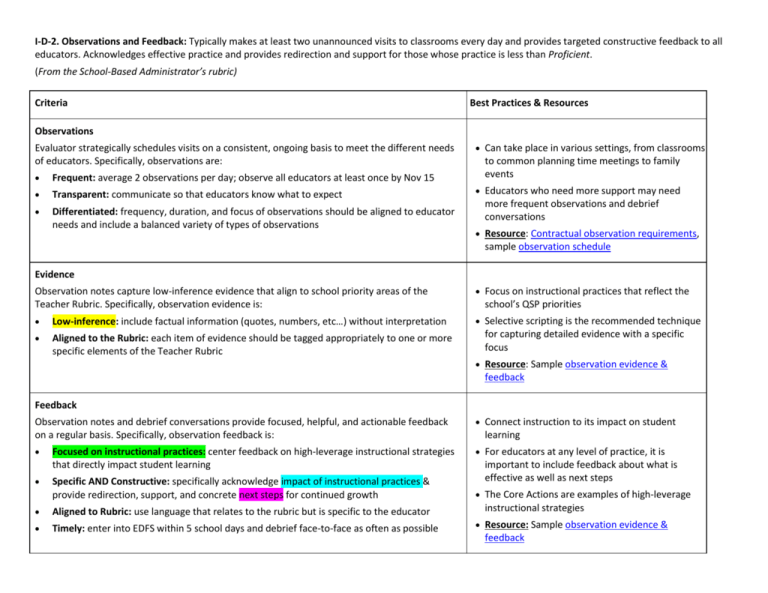
I-D-2. Observations and Feedback: Typically makes at least two unannounced visits to classrooms every day and provides targeted constructive feedback to all educators. Acknowledges effective practice and provides redirection and support for those whose practice is less than Proficient. (From the School-Based Administrator’s rubric) Criteria Best Practices & Resources Observations Evaluator strategically schedules visits on a consistent, ongoing basis to meet the different needs of educators. Specifically, observations are: Frequent: average 2 observations per day; observe all educators at least once by Nov 15 Transparent: communicate so that educators know what to expect Differentiated: frequency, duration, and focus of observations should be aligned to educator needs and include a balanced variety of types of observations Can take place in various settings, from classrooms to common planning time meetings to family events Educators who need more support may need more frequent observations and debrief conversations Resource: Contractual observation requirements, sample observation schedule Evidence Observation notes capture low-inference evidence that align to school priority areas of the Teacher Rubric. Specifically, observation evidence is: Focus on instructional practices that reflect the Low-inference: include factual information (quotes, numbers, etc…) without interpretation Selective scripting is the recommended technique Aligned to the Rubric: each item of evidence should be tagged appropriately to one or more specific elements of the Teacher Rubric school’s QSP priorities for capturing detailed evidence with a specific focus Resource: Sample observation evidence & feedback Feedback Observation notes and debrief conversations provide focused, helpful, and actionable feedback on a regular basis. Specifically, observation feedback is: Connect instruction to its impact on student For educators at any level of practice, it is Focused on instructional practices: center feedback on high-leverage instructional strategies that directly impact student learning Specific AND Constructive: specifically acknowledge impact of instructional practices & provide redirection, support, and concrete next steps for continued growth Aligned to Rubric: use language that relates to the rubric but is specific to the educator Timely: enter into EDFS within 5 school days and debrief face-to-face as often as possible learning important to include feedback about what is effective as well as next steps The Core Actions are examples of high-leverage instructional strategies Resource: Sample observation evidence & feedback

